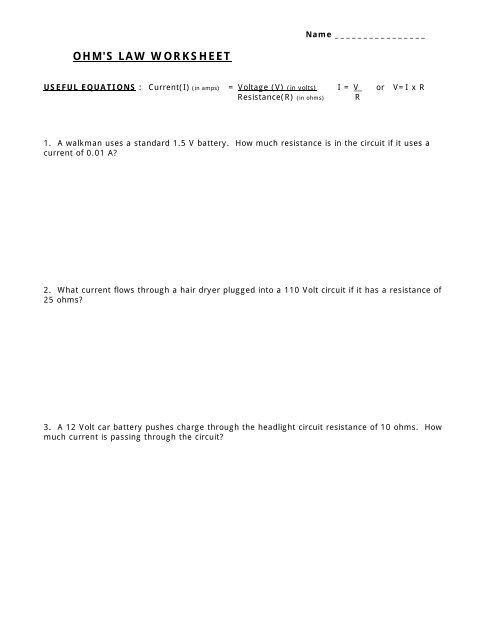Ohm’s Law and Power Equation are fundamental concepts in the field of electrical engineering and physics. These principles help us understand the relationship between voltage, current, resistance, and power in an electrical circuit. By applying these formulas, we can analyze and design various electrical systems with precision.
Ohm’s Law states that the current flowing through a conductor is directly proportional to the voltage applied across it, and inversely proportional to the resistance of the conductor. The formula is expressed as I = V/R, where I is the current in amperes, V is the voltage in volts, and R is the resistance in ohms.
Ohm’s Law and Power Equation Practice Worksheet
Let’s dive into some practice problems to reinforce our understanding of Ohm’s Law and the Power Equation. By solving these exercises, you can improve your proficiency in applying these formulas to real-world scenarios.
1. Calculate the current flowing through a resistor with a resistance of 10 ohms when a voltage of 20 volts is applied across it.
2. Determine the power dissipated by a light bulb with a resistance of 5 ohms when a current of 2 amperes flows through it.
3. Find the resistance of a heating element that draws a current of 4 amperes from a 120-volt power source.
4. Calculate the voltage required to produce a current of 3 amperes through a resistor with a resistance of 15 ohms.
By solving these practice problems, you can enhance your problem-solving skills and deepen your understanding of Ohm’s Law and the Power Equation. These principles are essential for analyzing and designing electrical circuits in various applications.
In conclusion, Ohm’s Law and the Power Equation are crucial concepts in the field of electrical engineering. By mastering these principles and practicing their application through worksheets and exercises, you can develop the skills needed to succeed in the field. Keep exploring and learning to unlock the full potential of electrical systems and circuits.
